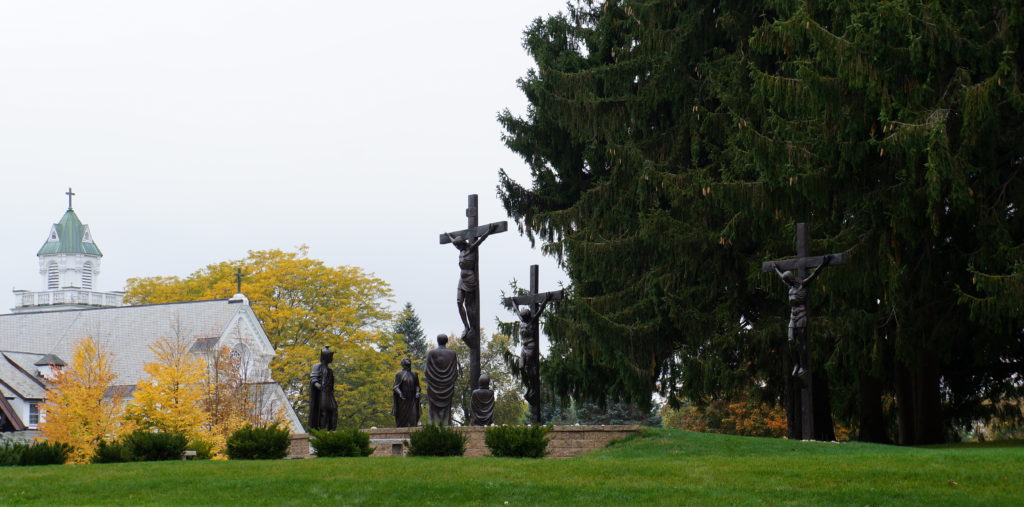mercy, and the prodigal son
I’ve heard a lot of memorable sermons on the Prodigal Son parable: that the father willingly gives the son his inheritance in the first place, or the fact that the son ends up with the swine indicates he’s in a foreign, non-Jewish place, or that the father recognizes him from far away and runs to meet him. All great.
But I’ve always had a difficult time with this parable because I strongly identify with the elder son who feels jilted. In my own family, we had a real-life prodigal son. My brother left us through addiction—he was still physically present, but his true self was chained up and slowly silenced by drugs. It was a roller coaster of emotions and events, and none of us handled it well for the first several years; we wanted him to take responsibility, but the rest of us didn’t know we had stuff of our own to deal with in the mess. I say “we”, but I felt alone. I think my parents saw it as their problem to deal with, and out of love and concern for me, didn’t want to include me. But what they didn’t realize until later is that I was already very much involved—entwined would be a better word—with the behavior of addiction. But I’m sure my mom felt alone, and I’m sure my dad felt alone, and I’m sure my brother felt alone (otherwise he wouldn’t have used, right?). So there we were, all living in the same house, feeling alone and isolated. Addiction does that; it’s a thing.
Even before my brother’s addiction, I’d been the easier kid. I took great pride in pleasing my parents, which doesn’t mean I never wronged them—I certainly did, and experienced deep shame and self-loathing when I did. What I didn’t realize until much later was how much of my identity I’d wrapped up in making people happy, whatever the cost. Then life shifted, my conversion began, I wanted to be Catholic—and suddenly, I wasn’t the perfect daughter anymore. I saw my parents as worried, distressed, perplexed, and disappointed. My identity within my family went belly-up. The night I was baptized, my parents sat in the back of the church, probably feeling like fish out of water. I was thankful they came, but it was awkward—they were uncomfortable, I was overjoyed.
Years later, my brother got clean and was baptized. The whole family of non-baptizing Quakers came to witness his baptism. There was joy and excitement. I was excited for him too, but I had to fight back a building resentment. In our family, my baptism was treated as a rite of dissent, a flood that formed a canyon between us, whereas my brother’s baptism was a triumphal entry. I was so proud of him, but I was also jealous that they were prepared to kill the fatted calf for him. On top of that was a layer of guilt for even feeling jealous—my brother was dead, and had come back to life!
So this parable makes me ask myself: was I obedient to my parents out of love, fear, or obligation? For me, obedience was tightly wound with my vanity because it was all about how I was perceived, not what was true and real, much like the elder son in the prodigal parable. So when another child was shown mercy and love, jealousy reared its ugly head and exposed my lack of love. There is an honesty and humility in the prodigal son, which the elder does not yet possess. If I had obeyed out of love, and had been more aware of how much mercy I’d received in my own life, I would have selflessly rejoiced that day with my family and not simmered in my own fear of rejection. Alas, I’m not perfect, no surprise there. So yeah, I get why the elder son was perturbed. And I also get why he was mistaken.
But it’s given me a lot to think about how I relate to God, my Father. Do I obey out of fear or out of love? It was one of the things on my short, but pointed list I wanted to really examine during these 33 days of consecration, and now we’ve come to it. Several days back I was supposed to contemplate God the Father and I struggled with that. The image in my mind of Jesus is pretty clear and distinct, but God the Father shifts and morphs depending on how I’m feeling. If I’m feeling guilty, God is a wrathful, fearful being from whom I want to hide. If I’m feeling good, He’s this beautiful Creator encompassing me with His wings. I want to bridge these two images, because a true father is both— tenderly showing the way with unwavering truth and unfathomable mercy.
Also… I forget that I’m the prodigal son, too. In my pride, I don’t want to admit that I’ve chosen to starve with the swine at times in my life. When I sin—which is a way of seeking meaning and purpose outside of God’s kingdom—and go to Confession, I am returning to the Father’s house in repentance, in the light of God’s mercy and love. I hear the voice of the elder son telling me that I’m not worthy of the Father’s mercy, not worthy of the Eucharistic feast He’s set before me. But God says I am.
In True Devotion, St. Louis de Montfort points out that scrupulosity or “servile fear” cramp, imprison, and confuse the soul. To this I can say, amen amen. One trait in St. Thérèse of Liseiux that I admire is her confidence in God’s mercy, which in action translates to a humility about her imperfections. I admire it precisely because I find that so difficult. To do that, God has to be seen as a tender, merciful Father, who waits for the prodigal to return and goes to great lengths—death, for instance—to be reunited.



